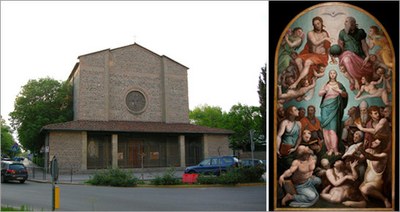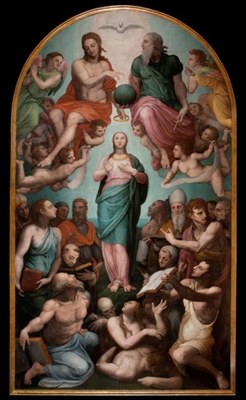Cultural heritage: Bronzino’s colors “unveiled” thanks to Italian technology
11/10/2018
 Bronzino's "Immaculate Conception" altarpiece is back in the Church of the Blessed Virgin Mary Queen of Peace in Florence, after a restoration conducted with the diagnostic support of ENEA and CNR, which brought to light unpublished details of the last work of one of the most famous painters of Italian Mannerism.
Bronzino's "Immaculate Conception" altarpiece is back in the Church of the Blessed Virgin Mary Queen of Peace in Florence, after a restoration conducted with the diagnostic support of ENEA and CNR, which brought to light unpublished details of the last work of one of the most famous painters of Italian Mannerism.
Specifically, ENEA performed diagnostics on pigments, both those relating to the original painting and those in the layers formed following past interventions.
 The analysis enabled restorers to discover that, compared to his early works, Bronzino used in this painting a very reduced range of pigments and very common raw materials, such as azurite instead of the much more precious lapis lazuli blue. Moreover, much of the sky and faces of the saints had been completely repainted to mask the state of abrasion of the originals, with a result very far from the sixteenth century painting.
The analysis enabled restorers to discover that, compared to his early works, Bronzino used in this painting a very reduced range of pigments and very common raw materials, such as azurite instead of the much more precious lapis lazuli blue. Moreover, much of the sky and faces of the saints had been completely repainted to mask the state of abrasion of the originals, with a result very far from the sixteenth century painting.
"For this restoration our laboratory has used XRF (X Ray Fluorescence Analysis), a non-destructive investigation technique that allows a semi-quantitative evaluation of the chemical elements present on a paintedsurface" Claudio Seccaroni, researcher at the ENEA Sustainable Innovation Technologies Laboratory, explained.
For more information please contact
Claudio Seccaroni, ENEA – Sustainable Innovation Technologies Laboratory, claudio.seccaroni@enea.it
